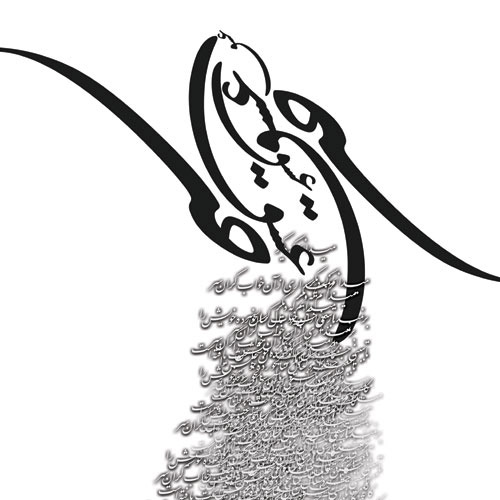Calligraphy — the art of the letter
The group exhibition, «Calligraphy — The Art of the Letter» hosted by Gallery Sarah for the month of Ramadhan at Bait Al Zubair, brings together an eclectic mix of Arabic calligraphers and typographers with incredible talents that are pushing the boundaries of the art form into new directions.
Calligraphy, which is the most highly regarded and fundamental element of Arabic art, is principally a means to transmit a text, albeit in a decorative form. The development of sophisticated calligraphy as an art form is not unique to Arab culture. Other examples include Chinese and Japanese calligraphy and illuminated bibles. In the Arabic world, however, calligraphy has been used to a much greater extent and in astonishingly varied and imaginative ways, which have taken the written word far beyond pen and paper into all art forms and materials. For these reasons, calligraphy may be counted as a uniquely original feature of Arab art. The genius of Arabic calligraphy lies not only in the endless creativity and versatility, but also in the balance struck by calligraphers between transmitting a text and expressing its meaning through a formal aesthetic code.
The two predominant styles used in Arabic calligraphy are the Kufic and Nashk.
Today contemporary calligraphers exploit the inherent possibilities of the Arabic script to create writing as an ornament. An entire word can give the impression of random brushstrokes, or a single letter can develop into a decorative knot.
Arabic calligraphy has outgrown its initial purpose of writing and communication to become a form of independent art that has been widely used, from writing the words of the Quran, to quotes and poetry. In the digital era, modern designers and calligraphers are still using Arabic calligraphy as an essential element of their designs. While many contemporary calligraphers and designers use the standard script styles, others prefer to use a free style, which is not restricted by the writing rules of any of the known standard scripts. This free style relies on the beauty of Arabic letters and how they can be curved, twisted, and reshaped to form a visual melody and eye-catching artwork. Unlike old Arabic calligraphy, which used to be written in ink with a pen or dried bamboo. Modern calligraphers experiment with different materials, such as acrylic paint, water colour, oil paint, graphics and even sculpture clay.
The exhibition «Calligraphy — The Art of the Letter» by Gallery Sarah will run from till the end of August and will be open to the public from 9:30 am to 6 pm on Saturday to Thursday at Bait Al Zubair.
 Calligraphy — the art of the letter
Calligraphy — the art of the letterSource: main.omanobserver.om
Calligraphy is the flower of a man′ s soul.



